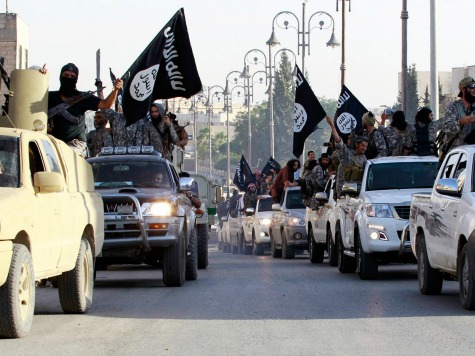
Even before Joint Chiefs Chairman Martin Dempsey testified Tuesday before the Senate Armed Services Committee that limited use of US ground forces could prove necessary in the US lead fight against ISIS terrorist forces in Iraq and Syria, some of President Obama’s senior military commanders were wondering whether his ambiguous war plans risked being defeated in Washington before ever reaching the battlefield.
The Washington Post quotes former CentComm Commander General James Mattis claiming that the Administration’s refusal to deploy ground forces to assist local fighters combatting ISIS will result in a war that cedes to the “enemy the initiative for longer period” and “doesn’t seem to be making progress.” The Post also claims that Current CentCom commander General Lloyd Austin’s proposal to deploy American Special Operations Forces to support Iraqi Army troops was rejected by the President.
All of which is complicated by the fact that leading Western intelligence services, including the CIA, now estimate that up to one third of ISIS’s reputed 30,000 to 45,000 trained fighters are so-called “foreign volunteers”, flooding into the war zone from around the world.
While up to one one third of these foreign fighters are believed to be citizens of EU nations with visa free access to the United States, the other two thirds are being ingathered from the four corners of the globe. Included among those foreigners ISIS volunteers are thought to be up to 100 Chinese nationals, the very first of whom is thought to have been seized by Iraqi Army forces late last week. If correct, it would mark the first known case of a Chinese national fighting with the ISIS terrorist army.
There are no reports yet as to where in China the Iraqi detained Chinese national is from. Suspicions center on the Uighur Muslim minority concentrated in Xinjiang Province which has been the source of recent terrorist attacks in China, including the notorious attack last March in which at least 10 terrorists dressed in matching black spandex outfits wielding machetes hacked to death 29 people at the Kunming railway station in Yunnan province.
Xinjiang, home to China’s largest population of Muslim Uighurs, has been racked for years by Islamist violence. The attacks have prompted massive government crackdowns against dissent and disorder in Xinjiang, including the closing of Mosques and the shuttering of Muslim schools. Last month official press reports hailed the “rescue” of 82 children from religious madrassas in Urumqi, Xinjiang’s capital. Across China, large gasoline purchases now require identification and permits from local police.
Last May, terrorists devastated an outdoor shopping market in the regional capital of Urumqi with a coordinated attack of car bombs, killing at least 39 and injuring hundreds more. The police accused the terrorist East Turkistan Islamic Movement (ETIM), an Islamist group demanding the establishment of an Islamist Muslim state in Xinjiang.
Chinese Muslim Uighurs are not new to jihad or foreign fighting. In 2006, American forces in Afghanistan captured 22 Uighur terrorists linked to al Qaeda. They were detained at the US detention facility in Guantanamo, Cuba until released after being reclassified as non-enemy combatants.
Chinese President Xi Jinping vowed in May to fight local terrorists even if it required building “nets spread from the earth to the sky.”

COMMENTS
Please let us know if you're having issues with commenting.